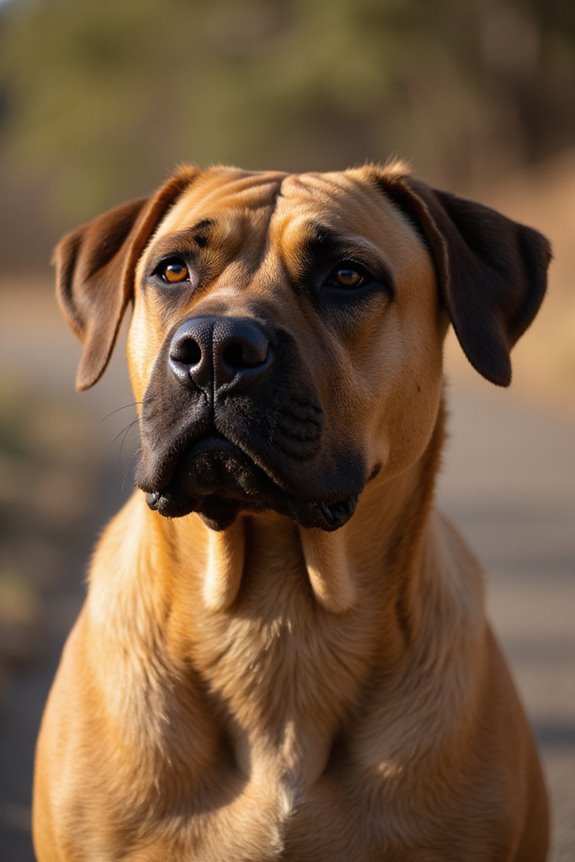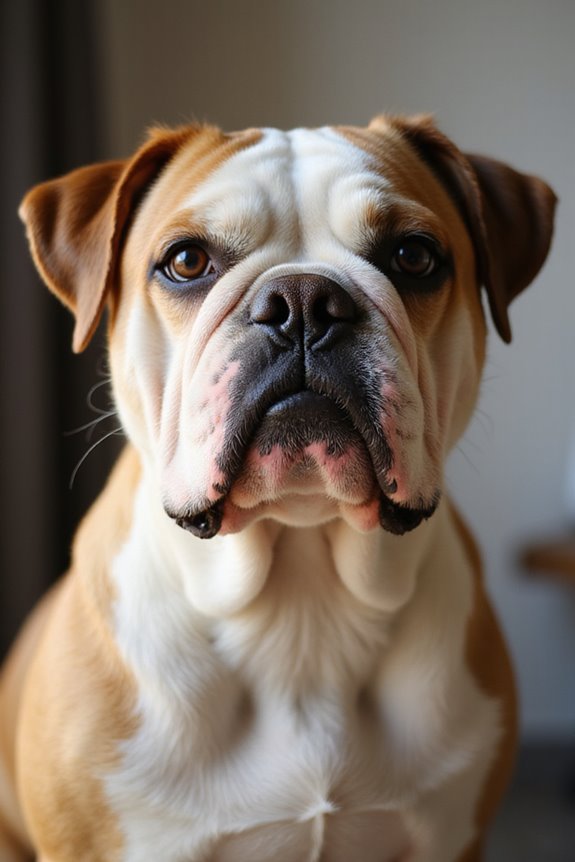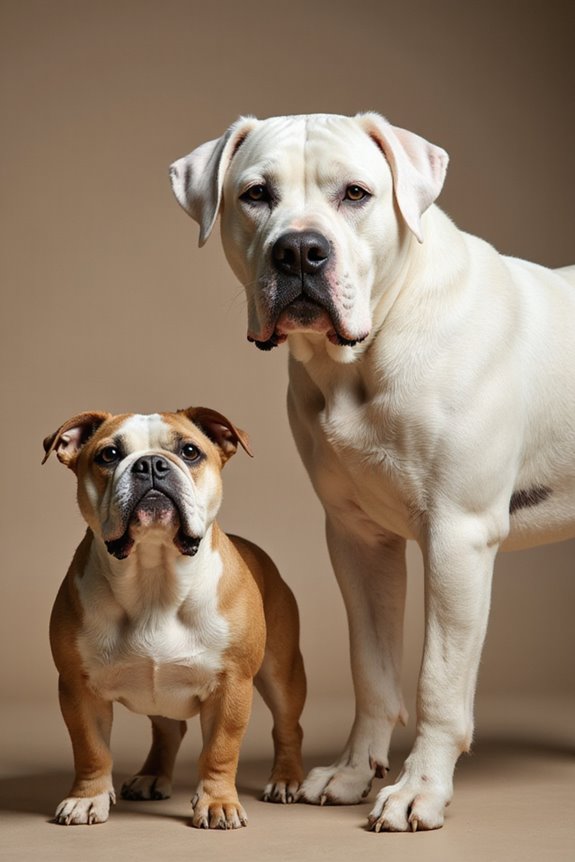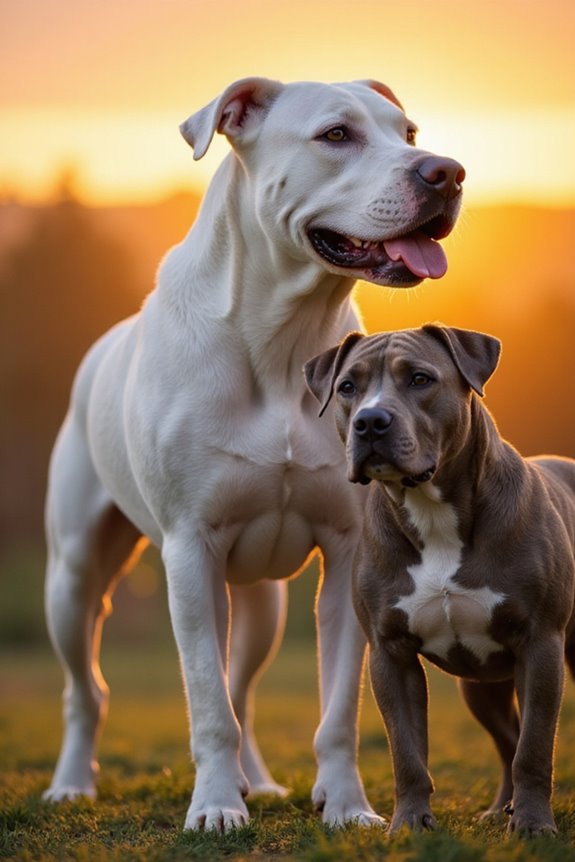The Dogo Argentino and Guatemalan Dogo both have distinct origins and purposes in the domain of Latin mastiffs. The Dogo Argentino, developed for hunting large game in Argentina, exhibits a muscular build and high prey drive. In contrast, the Guatemalan Dogo’s origins remain speculative. Both breeds require early training and socialization for proper temperament. Health concerns vary, with the Dogo Argentino facing issues like hip dysplasia. For more insights into their characteristics, keep exploring this comparison.
Key Takeaways
- The Dogo Argentino is a well-documented breed, specifically developed for hunting large game in Argentina, unlike the Guatemalan Dogo with unclear origins.
- Dogo Argentinos typically weigh between 80 to 105 pounds and feature a short, white coat with a dark spot, representing strength and athleticism.
- The Dogo Argentino displays loyalty and affection but has a high prey drive, requiring early socialization, while the Guatemalan Dogo is known for its protective instincts.
- Lifespan differs, with Dogo Argentinos living 9 to 15 years, compared to the Guatemalan Dogo’s 8 to 12 years, generally shorter than other breeds.
- Adoption and breeder costs for a Dogo Argentino range significantly, highlighting its popularity and demand compared to the less documented Guatemalan Dogo.
Origin and Purpose
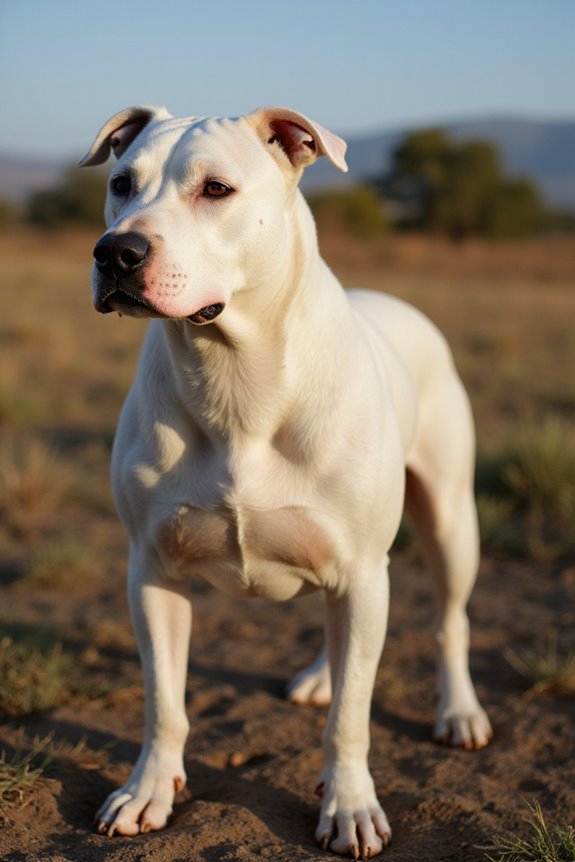
When discussing the origins and purposes of dog breeds, it’s important to recognize the significance of their development. The Dogo Argentino, developed in Córdoba, Argentina, showcases a robust breeding history aimed at hunting large game, such as wild boars and pumas. Created by Dr. Antonio Nores Martinez in the 1920s, this breed originated through the careful crossbreeding of multiple dogs, including the Córdoba Fighting Dog and Bull Terrier. Its remarkable hunting skills were honed over time, making it efficient in diverse terrains and challenging weather conditions. In contrast, the Guatemalan Dogo lacks documented origins or recognition, leaving its specific purpose and breeding history speculative. As a potential mastiff-type breed, it may share similarities with others in temperament and utility.
Physical Characteristics
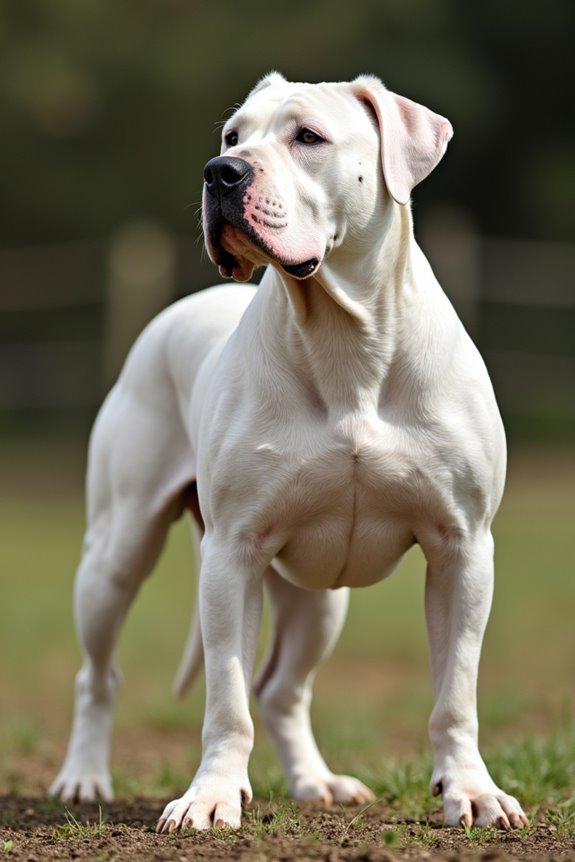
The Dogo Argentino stands out due to its impressive physical characteristics, which are tailored for both utility and aesthetic appeal. This breed is quite large, typically weighing between 80 to 105 pounds, with males being slightly bigger than females. With regard to height, they stand about 24 to 27 inches at the shoulder, giving them an imposing presence.
Their coat is short, smooth, and dense, primarily white, only permitting a small dark spot on the head. This uniform coat texture not only enhances visibility during hunts but also makes maintenance straightforward. With a muscular build and robust frame, the Dogo Argentino combines strength with an athletic posture, showcasing its heritage as both a companion and a working dog.
Temperament and Behavior
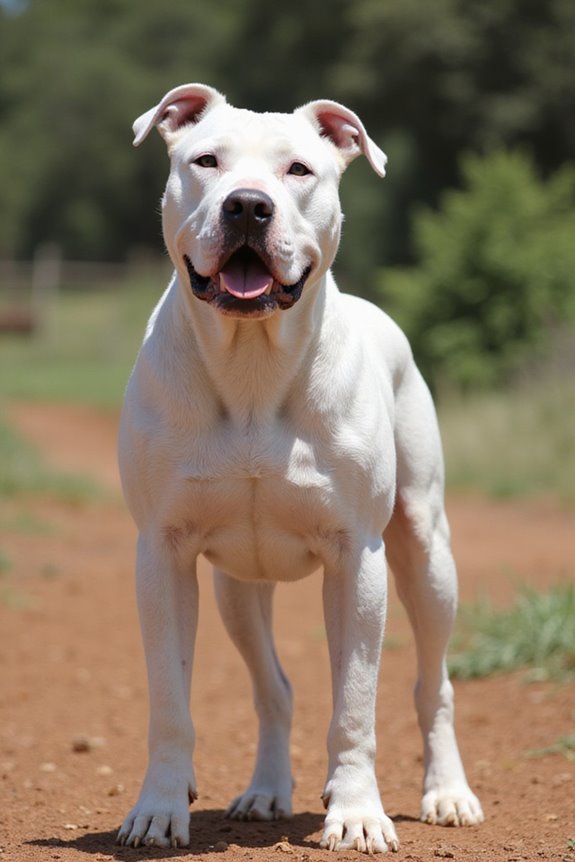
Understanding the temperament and behavior of both the Dogo Argentino and the Guatemalan Dogo is essential for potential owners and enthusiasts.
Dogo Argentino
- Exhibits loyalty and affection towards family members.
- Socialization techniques are vital, helping them become more welcoming to strangers.
- Possesses a high prey drive, necessitating supervision around smaller pets.
- Requires early and consistent training to manage energy and behaviors.
Guatemalan Dogo
- Displays strong protective instincts and loyalty to family.
- Can be reserved with strangers; socialization is key.
- May exhibit territorial behavior, requiring firm leadership.
Both breeds need early socialization and positive reinforcement to develop well. Understanding these traits will lead to better training and behavior management for both breeds.
Health and Longevity
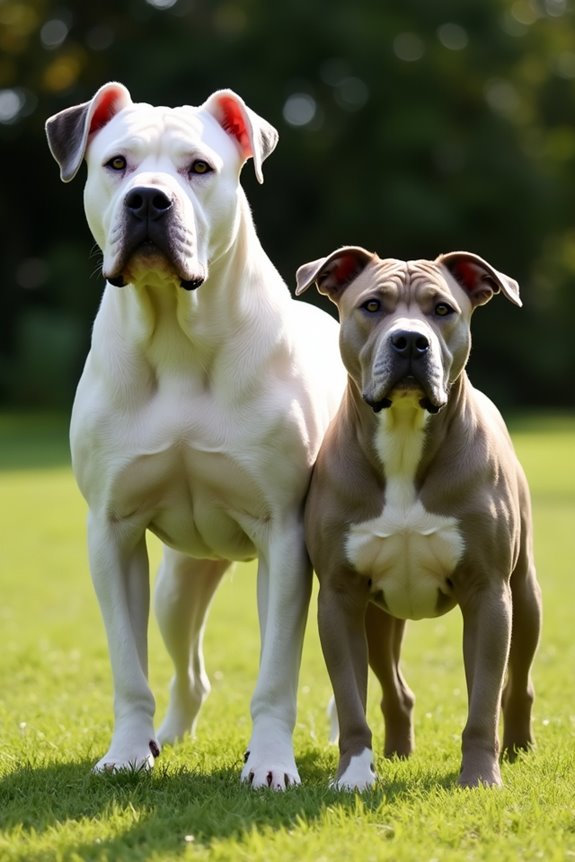
Health and longevity are critical factors to take into account when choosing between the Dogo Argentino and the Guatemalan Dogo.
- Dogo Argentino:
- Lifespan: 9 to 15 years, moderate for large breeds.
- Health concerns: Includes hip dysplasia, deafness, and skin issues. Dental disease can reduce lifespan considerably.
- Genetic screening can mitigate risks, improving health stability.
- Guatemalan Dogo:
- Lifespan: Generally 8 to 12 years, shorter than smaller breeds.
- Health concerns: Prone to joint issues, heart problems, and dental health issues.
- Genetic testing is advised for identifying hereditary health risks.
Both breeds require proper veterinary care, nutrition, and exercise to manage lifespan factors effectively, ensuring a better quality of life.
Training and Handling

Training and handling a Dogo Argentino requires a thoughtful approach, especially considering their robust nature and unique temperament. Here are some effective strategies to adopt:
- Early Training Foundations:
- Introduce the leash indoors and use positive reinforcement, such as treats and praise.
- Establish a routine for feeding, exercise, and training.
- Socialize your puppy with various people and environments early on.
- Teach them to accept grooming and vet visits calmly.
- Use simple commands with clear communication.
- Focus on positive methods to build respect.
- Dogo Argentino:
- Recognized by the AKC in 2020, adding to its prestige.
- Ranks 52nd in breed popularity in the U.S. with 57% public awareness.
- Known for its cultural significance in hunting and companionship.
- Guatemalan Dogo:
- Lacks recognition from major kennel clubs, limiting its global presence.
- Primarily popular in Guatemala, emphasizing local pride but overshadowed internationally.
However, expect handling challenges due to their strong-willed nature; consistency and patience are key to effective training.
Cost and Adoption
How much should you expect to invest when adopting a Dogo Argentino or Guatemalan Dogo?
Adoption fees for a Dogo Argentino typically range from $50 to $300. If you opt for a breeder, costs can soar between $1,500 and $4,000. Initial setup expenses, including a bed and grooming supplies, may cost an additional $250 to $500. Don’t forget essential vaccinations, which can add another $100 to $300.
While these upfront costs are significant, long-term expenses also demand consideration. Ongoing expenses such as food, grooming, and veterinary care, along with potential training, can accumulate over the years. Preparing for these financial commitments guarantees you’ll be ready for the rewarding journey of pet ownership.
Popularity and Recognition
When considering the popularity and recognition of dog breeds, it’s essential to highlight the stark contrasts between the Dogo Argentino and the Guatemalan Dogo.
In breed comparisons, the Dogo Argentino’s media visibility and acceptance greatly enhance its popularity, while the Guatemalan Dogo remains a niche breed with a more localized following.
Frequently Asked Questions
What Are the Primary Differences in Historical Origins of Both Breeds?
Delving deeper into dog breeds, I discern distinct differences in breed lineage and cultural significance: the Dogo Argentino boasts a well-defined, documented history, while the Guatemalan Dogo’s origins are more organic and locally influenced.
How Do They Perform in Dog Sports or Competitions?
When I think about dog sports, I see Dogo Argentinos excelling in agility trials with their impressive speed and intelligence, while I’ve heard the Guatemalan Dogo shines in weight pulling, demonstrating their strength and dedication.
Are There Specific Dietary Requirements for Each Breed?
Did you know large breeds like these often consume 20% more protein than smaller dogs? Both need strict nutritional needs and feeding guidelines to keep them healthy, emphasizing quality proteins and healthy fats. It’s essential!
What Unique Challenges Do Owners Face With Each Breed?
Owning either breed brings unique challenges. I’ve found that training challenges and temperament management are essential. Both demand commitment, space, and consistent guidance to thrive, ensuring a loving and well-adjusted companion journey together.
How Do Environmental Factors Influence Their Behavior?
Did you know that dogs thrive in environments with at least 30 minutes of daily exercise? I’ve found that environmental enrichment greatly helps curb behavioral triggers, keeping my furry friends happy and balanced in their surroundings.


